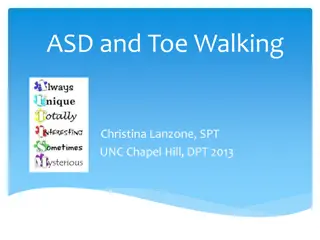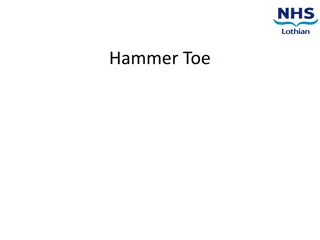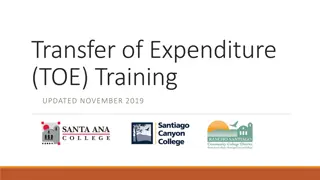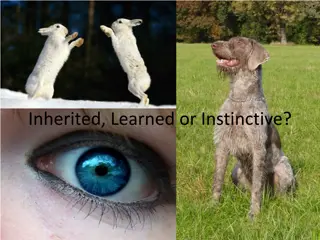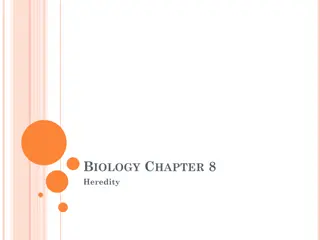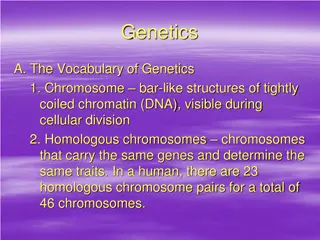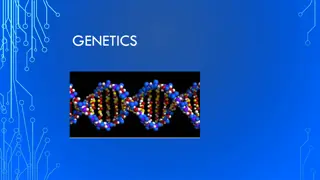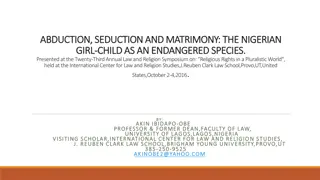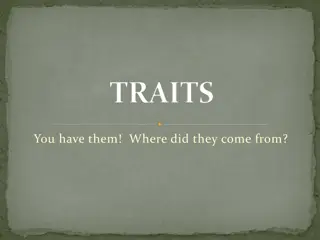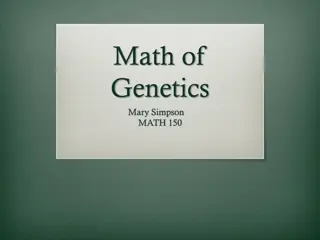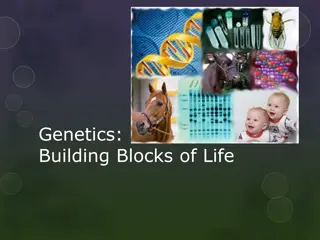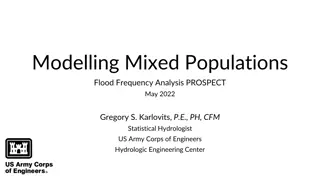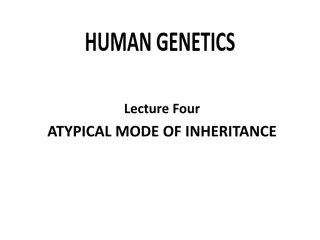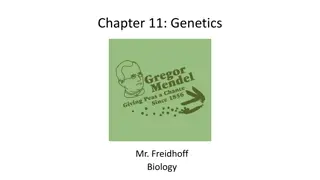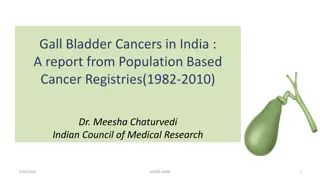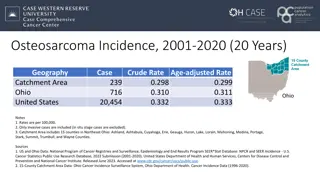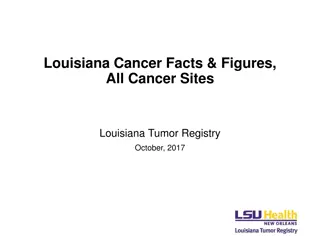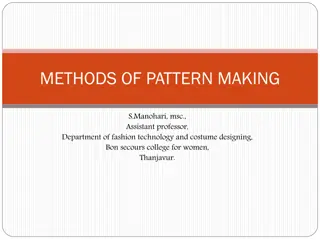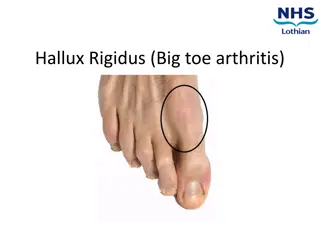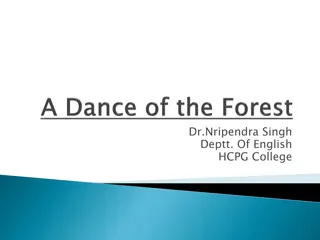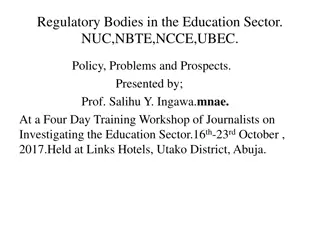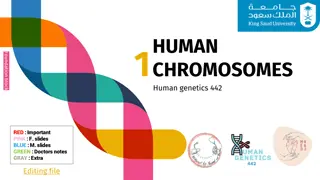Genetics and Incidence of Toe-Pattern Traits in Nigerian Populations
The study explores the genetic traits and incidence of toe patterns in Nigerian populations with a focus on familial and population studies to determine ancestral lineage. Various toe patterns and modes of inheritance are discussed, shedding light on the importance of toe structure in human evolution and survival.
Download Presentation

Please find below an Image/Link to download the presentation.
The content on the website is provided AS IS for your information and personal use only. It may not be sold, licensed, or shared on other websites without obtaining consent from the author. Download presentation by click this link. If you encounter any issues during the download, it is possible that the publisher has removed the file from their server.
E N D
Presentation Transcript
FACULTY OF SCIENCE CONFERENCE LAGOS STATE UNIVERSITY, OJO, LAGOS STATE, NIGERIA Friday, 13thOctober, 2017. 1 16/09/2024 kadekoya@unilag.edu.ng
THE GENETICS AND INCIDENCE OF THE TOE-PATTERN TRAITS IN SOME NIGERIAN POPULATIONS by Khalid Adekoya Department of Cell Biology and Genetics, University of Lagos, Nigeria Ime Etim Department of Biological Sciences, Akwa-Ibom State University, Akwa-Ibom, Nigeria Mutiu Sifau - Department of Cell Biology and Genetics, University of Lagos, Nigeria Gideon Alimba Department of Zoology, Cell Biology and Genetics Unit University of Ibadan, Nigeria Adebayo Ogunkanmi - Department of Cell Biology and Genetics, University of Lagos, Nigeria Bolanle Oboh - Department of Cell Biology and Genetics, University of Lagos, Nigeria 2 16/09/2024 kadekoya@unilag.edu.ng
3 16/09/2024 kadekoya@unilag.edu.ng
INTRODUCTION Human Feet Played roles in his survival and evolution. Evolved as a platform to support the weight of the body Strong, Complex and a Mechanical Structure and the weight is spread round the toes. 4 16/09/2024 kadekoya@unilag.edu.ng
Toes Twenty- six (26) bones, 33 Joints (20 articulated) More than 100 muscles, tendons and ligaments Fore-foot made up of 5 toes (Phalanges) Technically, the hallux and the pinky toes are the most important ones as they are responsible for balancing 5 16/09/2024 kadekoya@unilag.edu.ng
Toe Patterns established as genetic trait from familial and population studies could be used to determine ancestral lineage. Various patterns and numerous modes of inheritance have been postulated for the toe trait in previous studies (Kaplan, 1964; Papadopoulos and Damon, 1973; Macdonald, 2011; Eupedia, 2013) 16/09/2024 kadekoya@unilag.edu.ng 6
TOE PATTERNS SLANTING HORIZONTAL ROOF HOOK STAIRS BASED ON THE ABOVE WHAT ARE YOUR ROOTS??????? 16/09/2024 kadekoya@unilag.edu.ng 7
AIM OF THE STUDY 8 16/09/2024 kadekoya@unilag.edu.ng
MATERIALS AND METHODS 107 Families LAGOS AKWA-IBOM EDO ENUGU 9 16/09/2024 kadekoya@unilag.edu.ng
DISTRIBUTION OF SUBJECTS 519 = 42% 710 = 58% MALES 682 = 57% FEMALES FEMALES 513 = 43% 700 600 500 400 300 200 100 0 10 ADULTS NON-ADULTS 16/09/2024 kadekoya@unilag.edu.ng
The toe patterns on both feet were drawn on white papers in sitting positions Questionnaires were administered on all subjects Statistical analysis using Chi square (p<0.05) 11 16/09/2024 kadekoya@unilag.edu.ng
SOME TOE PATTERNS IN NIGERIANS B C A D E F 12 16/09/2024 kadekoya@unilag.edu.ng
RESULTS Table 1: Number of offspring from different toe -pattern matings Parents mating types Fa. X Mo. Number of Matings Number of mating 1>2 2>1 1=2 1 X 2 12 25 23 2 1 X 1 54 191 12 0 1 X = 1 2 0 2 2 X 1 10 21 17 2 2 X 2 13 11 38 0 = X = 12 1 2 38 = X 1 5 6 0 12 Total 107 257 92 56 13 16/09/2024 kadekoya@unilag.edu.ng
200 180 160 140 NUMBER OF OFFSPRING 120 1>2 100 2>1 1=2 80 60 40 20 0 1 X 2 1 X 1 1 X = 2 X 1 2 X 2 = X = = X 1 TOE PATTERN MATING TYPES Fig 1: Number of Offspring produced by different Toe Pattern mating types 16/09/2024 kadekoya@unilag.edu.ng 14
RESULTS Table 1 shows the longer hallux (1>2>3>4>5) was the most predominant trait in studied families with the highest incidence of 73.09% The least prevalent toe-pattern trait was the equal hallux and second toe (1=2>3>4>5) with 18.01%. Various mating types relative to the lengths of the hallux mostly produced progeny having their parental types. No progeny has equal hallux and second toe in matings of longer hallux parents and longer 15 16/09/2024 kadekoya@unilag.edu.ng
RESULTS Table 2: Number of individuals with a toe trait on both feet 1>2 2>1 1=2 Total Adult 321 137 55 513 Children 524 112 46 682 Total 845 249 101 1195 Table 3: Number of male and female with a toe trait on both feet 1>2 2>1 1=2 Total Male 489 152 69 710 Female 387 96 36 519 Total 874 248 105 1229 16 16/09/2024 kadekoya@unilag.edu.ng
RESULTS Incidence Tables 2 and 3 show the longer hallux (1>2>3>4>5) still has the highest proportion - The lowest proportion of the toe pattern goes to the equal hallux and second toe (1=2>3>4>5) - 17 16/09/2024 kadekoya@unilag.edu.ng
RESULTS The incidence of the longer hallux was prevalent in the Nigerian populations However, a rare case of (1<2>3>4>5) pattern was significant (P<0.05) among the Bini tribe studied. Table 4: Proportion (%) of toe trait variants in the Nigeria tribes (a toe trait on both feet) Tribe 1>2 2>1 1=2 Bini 13.33 73.33 13.33 Edo 75.61 19.51 4.88 Hausa 48.57 2.86 48.57 Ibibio 87.50 8.93 3.57 Igala 53.33 33.33 13.33 Igbo 69.50 22.50 8.00 Urhobo 75 12.50 12.50 18 16/09/2024 kadekoya@unilag.edu.ng Yoruba 76.33 16.43 7.24
DISCUSSION Pedigree analysis of the data cancelled out most modes of inheritance. The toe pattern trait does not follow simple Mendelian laws as previous studies suggested. Numerous variants of the patterns were observed. In other words, longer hallux has variants of its own likewise the longer second toe and, equal hallux and second toe. 19 16/09/2024 kadekoya@unilag.edu.ng
DISCUSSION The study proposes a polygenic nature for the mode of inheritance with the genes possibly having additive effects when expressed in the progeny 20 16/09/2024 kadekoya@unilag.edu.ng
CONCLUSION From the findings, toe-pattern traits seems to have a polygenic basis as the mode of inheritance. Also, the genes tend to act additively to express the numerous forms of the observed patterns. 21 16/09/2024 kadekoya@unilag.edu.ng
22 16/09/2024 kadekoya@unilag.edu.ng


